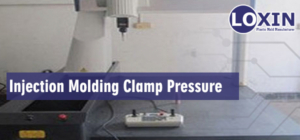Injection molding is one of the most effective methods of production, especially when producing products in large quantities. It is very popular owing to the fact that it reduces production costs a great deal. Not only that, but injection molding is also associated with lower scrap rates. This means that it is not as wasteful as traditional production methods. It is also very repeatable, which essentially means there is not much to be lost in terms of time and resources. It can be used to produce millions of similar parts at a fraction of the time and cost of other methods.
One of the most important aspects of injection molding is the clamp pressure. It plays an indispensable role in the process and can actually be used to enhance effectiveness. Here is all you need to know about clamp pressure and how it affects the outcome of the process.
Injection Molding Clamp Pressure
There are virtually two types of mold injection compressions used for thin walled high aspect ratio parts. The first requires the use of a secondary cylinder or a moving side core which spaces out the cavity and then clamps forward thus leaving the part stress free. The second method, also referred to as coining, works by reducing the clamp pressure. With this method, the mold is closed under reduced clamp pressure and then the cavity is filled.
Where there is a very repetitive injection and clamping system, the injection profile can be set specifically to increase efficiency by alternating the pressure. In this case, the cavity is filled to the highest pressure until the clamp pressure is overcome. Under these circumstances, the injection has zero fill speed, but this changes and it starts rising slowly till about 20% so that the crossover can hold. For this to work however, it is necessary that the injection system be very repeatable. Dial indicators are essential in monitoring the clamp breathing stroke.
When the material begins to shrink, the clamp follows the melting movement but it does not close completely as it normally does. This might affect various aspects of your parts, such as their thickness, flatness and uniformity, but such differences are often negligible. Our company has produced countless parts using this method for decades and it certainly does work. It is however important to note that the weight of your parts is dictated by your press control and the repeatability of the process. Results will vary widely depending on these two factors.
various aspects of your parts, such as their thickness, flatness and uniformity, but such differences are often negligible. Our company has produced countless parts using this method for decades and it certainly does work. It is however important to note that the weight of your parts is dictated by your press control and the repeatability of the process. Results will vary widely depending on these two factors.
When using this method, flashing during the injection- compression stroke is a real threat. To prevent this from happening, it is not uncommon to have about 70 drift angle on the venting/ parting line. This is however dependent on the type of material undergoing the process and the procedure for edge definition.
There are also myriad other factors to keep in mind when using this method of injection molding. Factors such as plastification, melt viscosity and pellet size uniformity have a direct impact on the quality of the plastic parts you will produce.
Conclusion
The clamp pressure is essential in injection molding. Using the method described above, you can manipulate clamp pressure to ensure that you make the most of the molding process. Keep in mind that there are factors, such as melt viscosity and plastification, which influence the success of the method. If you use them to your advantage, you will be able to boost the effectiveness of the process a great deal.
If you have any Injection Mold Requests, please feel free to contact us and we are ready to serve you.




 Most Effective Injection Mould Service in China Mold Factory
Most Effective Injection Mould Service in China Mold Factory The-2019-Ultimate-Plastic-Mold-Manufacturer---LOXIN-Mold
The-2019-Ultimate-Plastic-Mold-Manufacturer---LOXIN-Mold Must-know-How-Is-Plastic-Injection-Molding-Process
Must-know-How-Is-Plastic-Injection-Molding-Process


